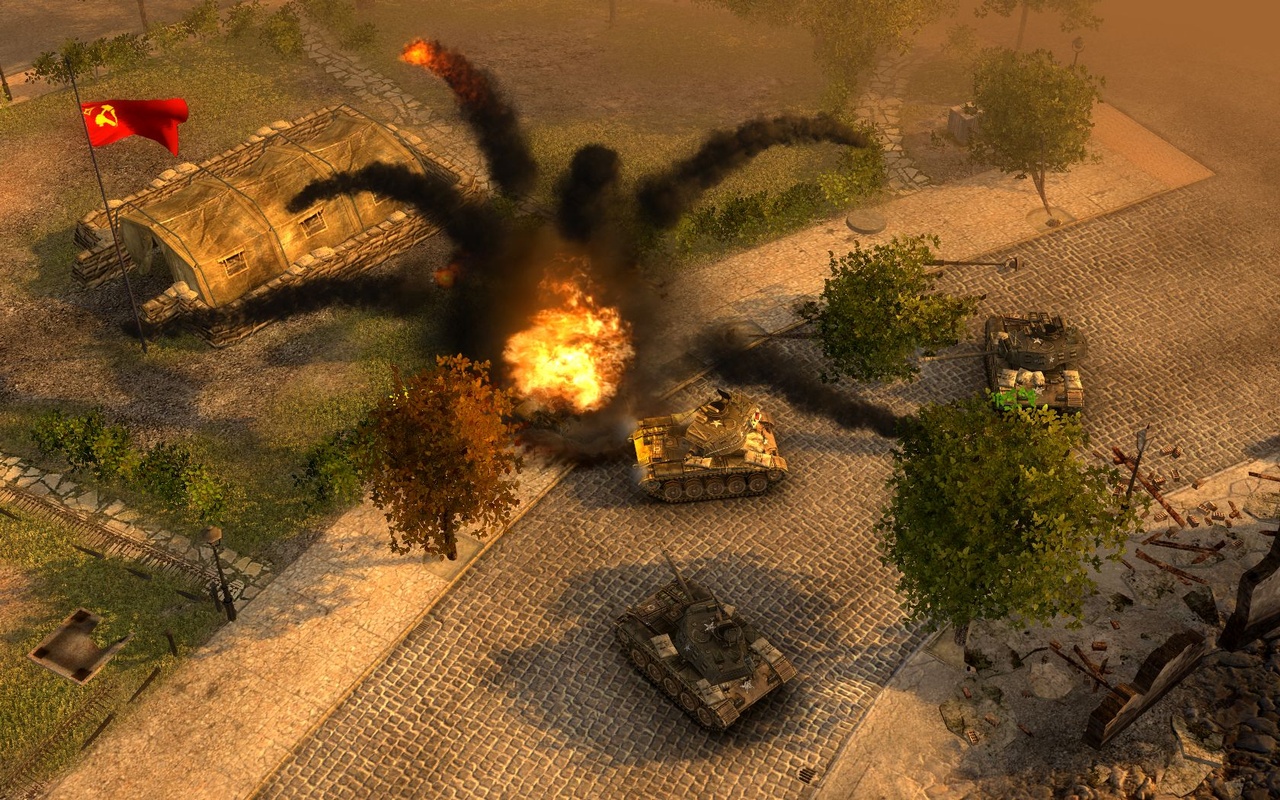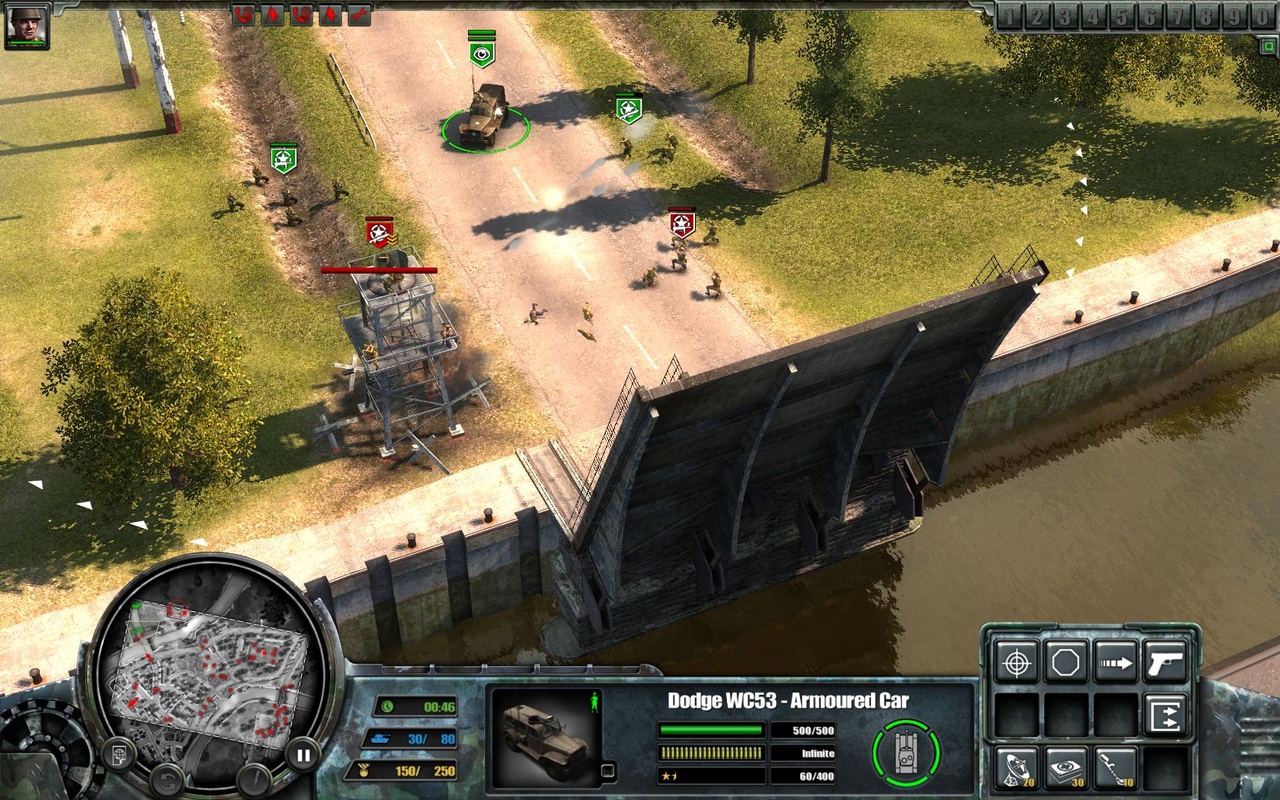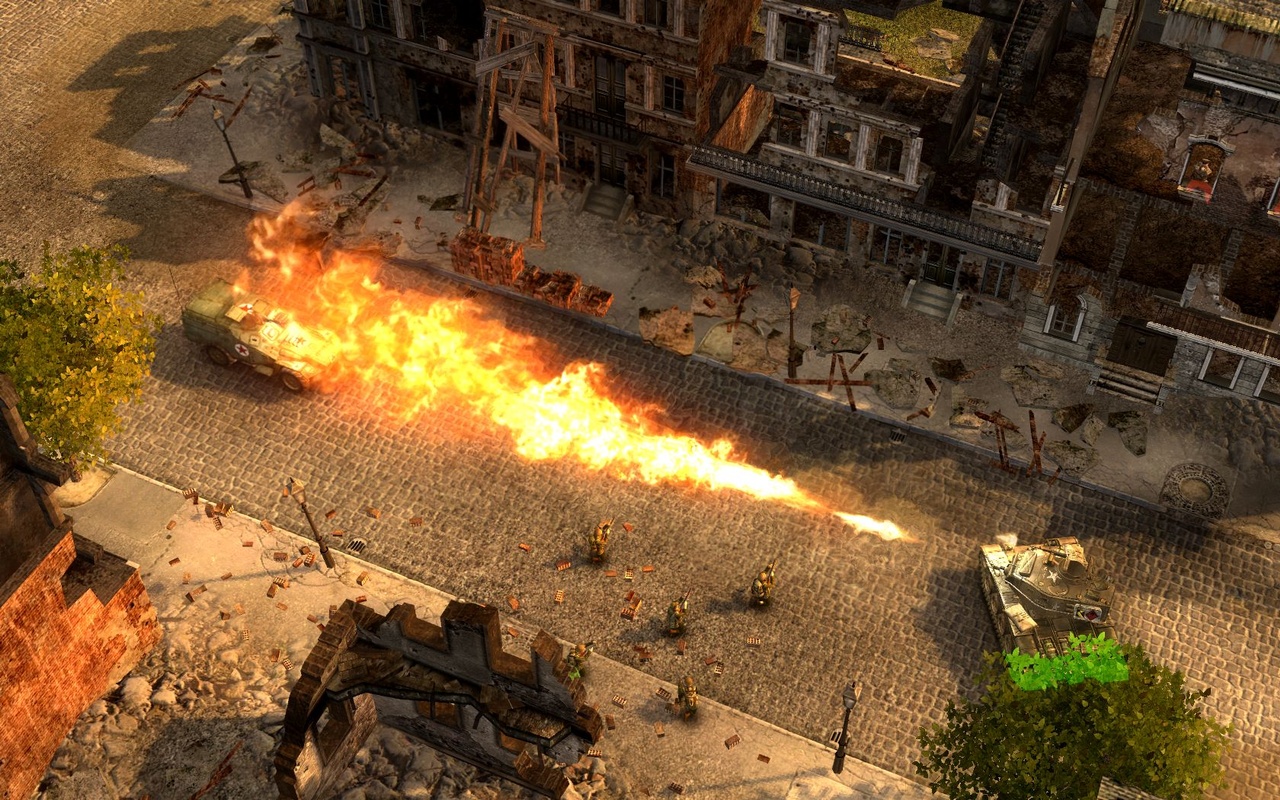Codename Panzers: Cold War Hands-On
Codename Panzers: Cold War takes the acclaimed real-time strategy series out of World War II for the first time. We flew to Hungary for a full briefing.
The Codename Panzers games have earned Hungarian developer Stormregion a reputation for making solid, tactical real-time strategy games, but its new game Codename Panzers: Cold War looks set to finally take the series out of the World War II scenario. Many RTS gamers have become weary of those well-trodden battlefields, and the change seems to have given the developer the creative freedom to develop the series' gameplay even further. We went to Hungary to get our hands on a near-final version of the game, which looks like it will offer some great new units while raising the bar in a fresh and interesting setting.

Codename Panzers: Cold War doesn't stray too far from the series' historical roots, using the 1949 Berlin blockade as a jump-off point into an alternate history timeline. In this timeline, a fictitious collision in the skies of the divided city at Tempelhof airport triggers conflict between the West and the Soviet Union. You'll take the role of the NATO general tasked with beating back the overwhelming Soviet invasion of Western Europe, which you can do in solo play or in online co-op mode with another player. The 18-mission campaign focuses largely on the NATO story, but you'll get to play three Soviet missions at the end to wrap up the narrative. The gritty atmosphere of the early Cold War pervades everything in the game and little touches, such as historical footage of the Berlin airlift followed by animated cutscenes of the "Tempelhof incident" before the first mission, really help set the tone. The developers have tried to give Cold War the feel of a Hollywood movie by using cutscenes, in-game moments, and music to tell their story.
We watched a tech demo of the new Gepard 3 graphics engine that Stormregion developed especially for Panzers: Cold War, and it looked like it was developing nicely. Just about everything in the game is useable or destroyable--buildings crumble realistically under fire, steel bends, and rather than relying upon animation for structures, the physics engine treats pieces of buildings as physical objects interacting with each other as they fall. During our first mission, we watched a tank volley sheer the front off a garrisoned building as convincing rag-doll-animated troops fell screaming out of shattered windows; cool confirmation that the engine doesn't just make things look pretty, but really affects game play. Your troops intelligently use physics-based cover while passive engine effects, such as nighttime or rain, will affect their sight range and speed.
You'll fight across a variety of environments, with combat in the game putting a lot of emphasis upon tactics and skilled use of combined arms. Detailed unit stats mean that tanks have different levels of armour to the front and rear. So you'll have to play tactically, encircling and flanking enemies. Every level seems to have multiple ways of meeting map objectives. On one we played, we had the choice of directly storming an enemy stronghold, seizing a hill-top artillery post, and bombarding it or capturing a heavily armoured train while ploughing through enemy tanks into the base. After each mission, you get to see all the map objectives, including secret ones you might have missed, and you can go back into levels to increase your score. You'll find yourself rewarded for seeking out secondary and secret objectives in the game, as well as striving to capture strategic points on the map.

Cold War has a slightly different approach to resource management than other RTS games, with "prestige points" replacing resource gathering. Prestige points are earned by completing objectives on the map, capturing key points, and killing enemies. This game currency is used to purchase your core army units, reinforcements, vehicle equipment, and external support, such as airstrikes. It's extremely satisfying to capture a prestige flag after a tough battle then gain enough prestige to order reinforcements and roll forward. You're constantly expanding your territory, especially because the market screen, where you buy new units, only opens at specific reinforcement points that usually have to be captured. Any unit can be added to your core army, which gains experience and becomes stronger as you progress through the game. Losing reinforcements won't bother you too much, but you'll feel differently when a tank or squad you've ranked up through several engagements is lost. Reinforcement units are delivered to you in helicopters, trains, and even ships.
All the game units are historically accurate for the period, even if some of them never made it past the prototype stage in real life. The game uses an equipment system to upgrade vehicles, and once you purchase equipment, you add it to units as you need it. Tanks can change guns for increased accuracy or power, while flamethrowers help capture enemy vehicles. Camouflage makes it harder for the enemy to see your units, and radar dishes can increase your detection range through the fog of war. Armored personnel carriers can be equipped to repair and resupply your tanks, but some bodies of water can only be crossed by units with amphibious equipment. Equipment lends itself to some interesting puzzle-solving and tactics. On the second level we played, the Soviets raised a bridge over a river we needed to cross. We only progressed by equipping troop-filled APCs with amphibious abilities and capturing the bridge controls on the other side. You'll also have hero units, some of which are returning characters from the previous Codename Panzers games. They have various powerful abilities, but losing them generally means a failed mission.
Infantry is based upon variable squads, with a leader who has a particular ability, allowing for machine gun, flamethrower, machine-gun medics, or bazooka squads. Players then assign the squad a leader with his own special ability. Lieutenants construct watchtowers, rangers dig defensive foxholes, and paramedics set up first-aid tents. Engineers set up repair stations, lay mines, and barbwire. Our favourite was the Green Beret, who can dig tunnels to take troops units into enemy strongholds, which should make for some crafty tactics in multiplayer.

In addition to playing through the campaign in co-op, the multiplayer game will ship with about 25 maps, a map editor, and a selection of game modes for up to eight players. These modes include free for all, domination, and team match. Multiplayer will also be the arena that sees players using the game's most powerful weapon, the nuclear-like D-bomb, which you use to capture nuclear silos. Having seen fantastic video of the weapon's game effects, we think it's clear that you'll want to quickly stop opponents during the bomb's long countdown because it's a game-ending weapon.
So far, Codename Panzers: Cold War is coming along really well, building upon the strong gameplay of the series' previous games while seriously ramping up the intensity of the action. Cold War is due out in March of next year. Hopefully, the new additions and change in setting from World War II will be enough to attract new players to it, as well as bring Codename Panzers' fans back for another look.
Got a news tip or want to contact us directly? Email news@gamespot.com
Join the conversation